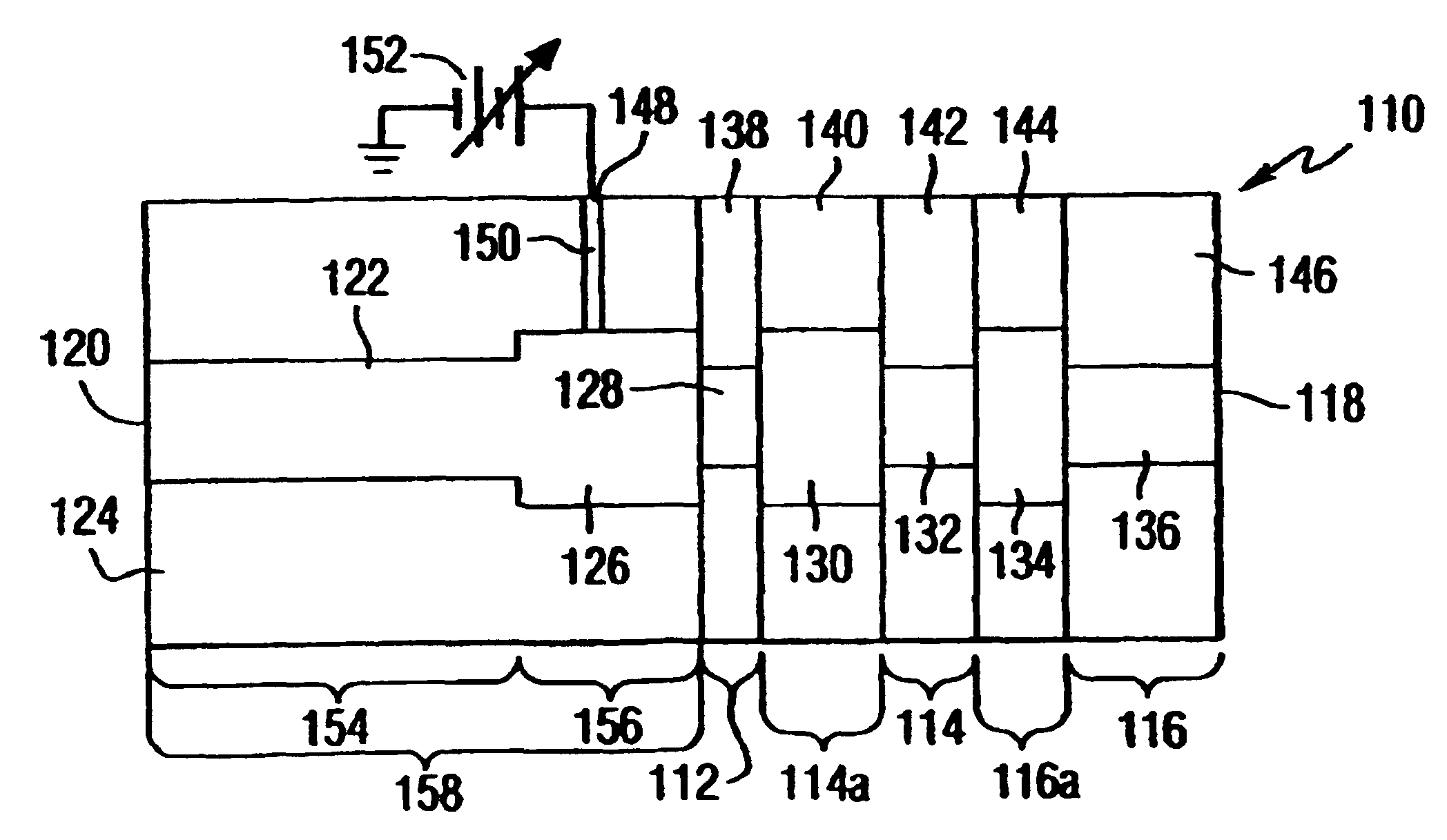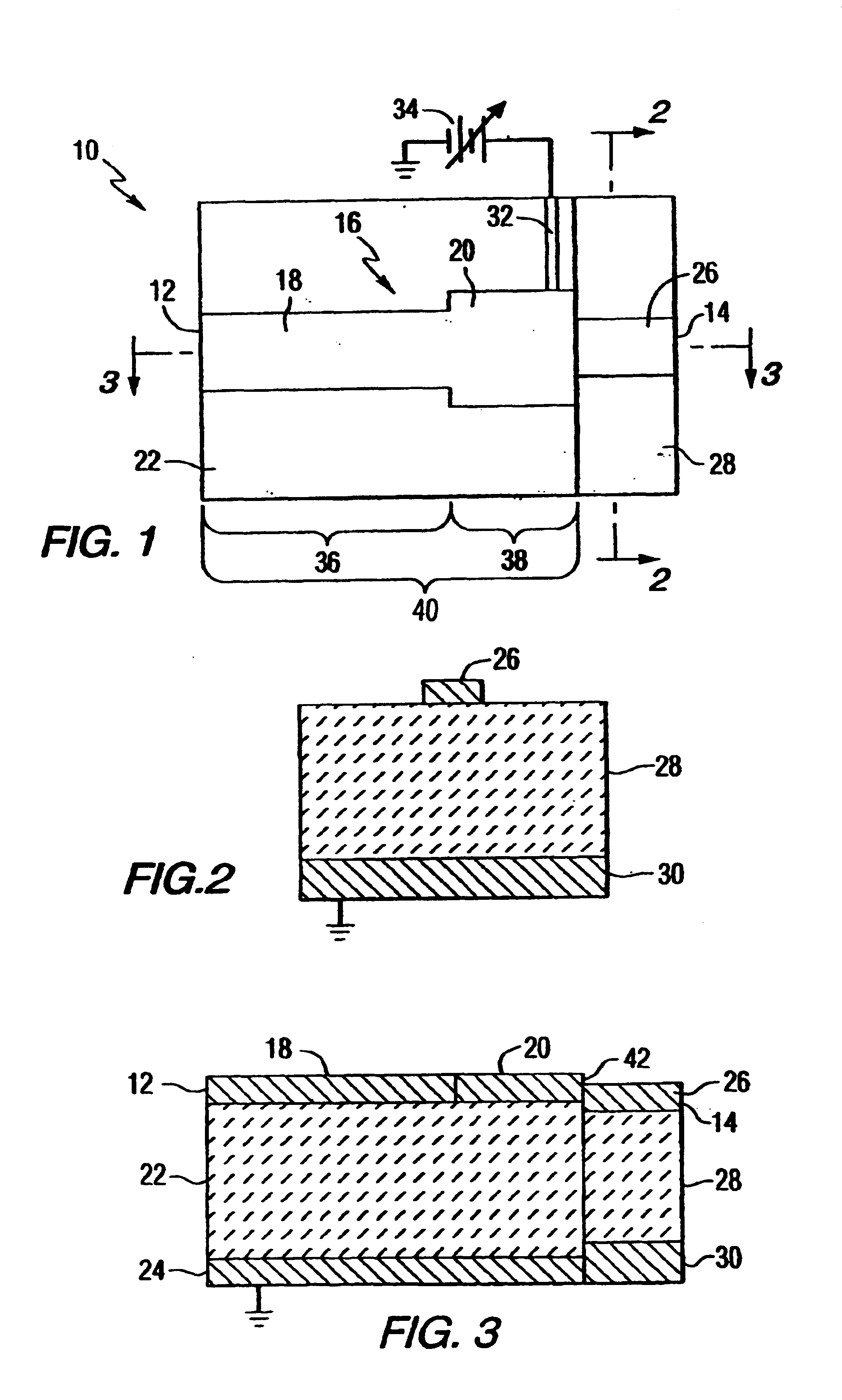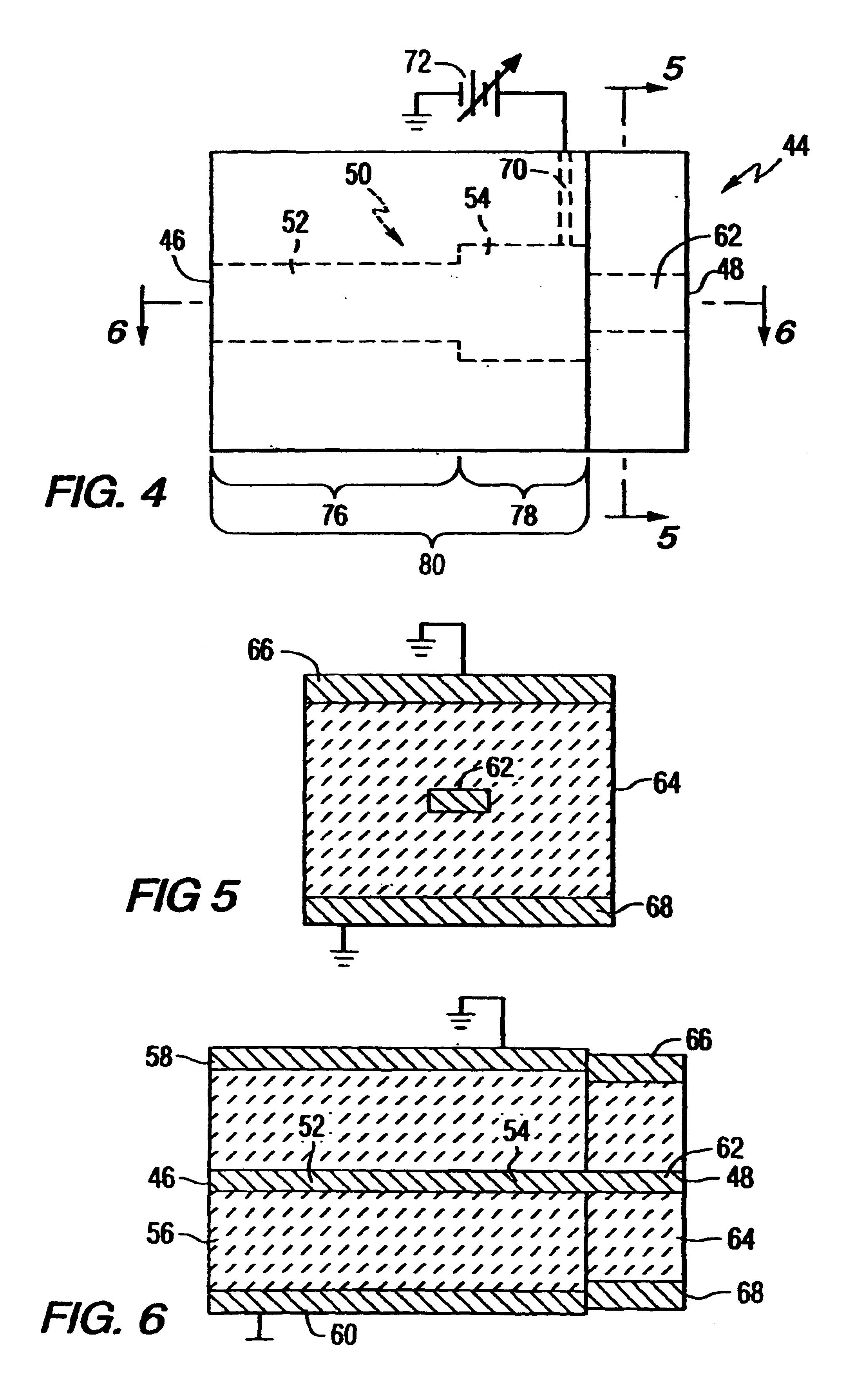Tunable microwave devices with auto-adjusting matching circuit
a matching circuit and microwave technology, applied in the field of tunable microwave devices, can solve the problems of impedance matching, impedance matching, and character impedance of the tunable components in the tunable microwave device not being constant values, so as to reduce reflections and reduce signal reflections
- Summary
- Abstract
- Description
- Claims
- Application Information
AI Technical Summary
Benefits of technology
Problems solved by technology
Method used
Image
Examples
first embodiment
Referring to the drawings, FIG. 1 is a plan view of an auto adjusting matching network of this invention in the form of the microstrip circuit 10. FIG. 2 is a cross-sectional view of FIG. 1 taken along line 2—2, showing the microstrip line geometry. FIG. 3 is a cross-sectional view of FIG. 1 taken along line 3—3.
The device has two ports 12 and 14 for input and output of a guided electromagnetic wave. It includes a multi-stage microstrip line 16, having sections 18 and 20 of various widths and lengths, deposited on a non-tunable dielectric substrate22, which in turn is supported by ground plane 24; and a microstrip line section 26 deposited on a voltage tunable dielectric substrate 28 which in turn is supported by ground plane 30. A biasing electrode 32 in the form of a high impedance microstrip line is connected to microstrip section 20.
The biasing electrode 32 serves as a means for connecting an external variable DC bias voltage supply 34 to the auto-adjusting impedance matching ci...
second embodiment
FIG. 4 is a plan view of the auto adjusting matching network 44 of the invention in the form of a stripline. FIG. 5 is a cross-sectional view of FIG. 4 taken along line 5—5, showing a stripline geometry. FIG. 6 is a cross-sectional view of FIG. 4 taken along line 6—6.
The device 44 has two ports 46 and 48 for input and output of the guided electromagnetic wave. It comprises a stripline 50 having sections 52 and 54 of various widths and lengths embedded in a non-tunable dielectric substrate 56 supported by top and bottom ground planes 58 and 60, an additional section 62 of stripline 50 embedded in a tunable dielectric substrate 64 supported by top and bottom ground planes 66 and 68, and a biasing electrode 70 in the form of a high impedance stripline is connected to stripline section 54.
The connection of biasing electrode 70 to the circuit is not limited to stripline section 54, but may be made to any other part of the circuit that is electrically connected to stripline section 62. Th...
third embodiment
FIG. 7 is a longitudinal cross-sectional view of the invention for the auto adjusting matching network based on a coaxial geometry. FIG. 8 is a cross-sectional view of FIG. 7 taken along line 8—8, showing the coaxial transmission line geometry.
The device 82 of FIGS. 7 and 8 has two ports 84 and 86 for input and output of the guided electromagnetic wave. It comprises a center conductor 88 having sections 90 and 92 of various diameters and lengths surrounded by a non-tunable dielectric substrate 94, which in turn is surrounded by ground conductor 96. An additional center conductor section 98 is surrounded by a tunable dielectric substrate 100, which in turn is surrounded by ground conductor 102. A thin biasing electrode 104 enters the co-axial structure through a small hole 106 and is connected to the central conductor 88.
The connection of biasing electrode 104 to the circuit is not limited to the center conductor section 92, but may be made to any other part of the circuit that is el...
PUM
 Login to View More
Login to View More Abstract
Description
Claims
Application Information
 Login to View More
Login to View More - R&D
- Intellectual Property
- Life Sciences
- Materials
- Tech Scout
- Unparalleled Data Quality
- Higher Quality Content
- 60% Fewer Hallucinations
Browse by: Latest US Patents, China's latest patents, Technical Efficacy Thesaurus, Application Domain, Technology Topic, Popular Technical Reports.
© 2025 PatSnap. All rights reserved.Legal|Privacy policy|Modern Slavery Act Transparency Statement|Sitemap|About US| Contact US: help@patsnap.com



